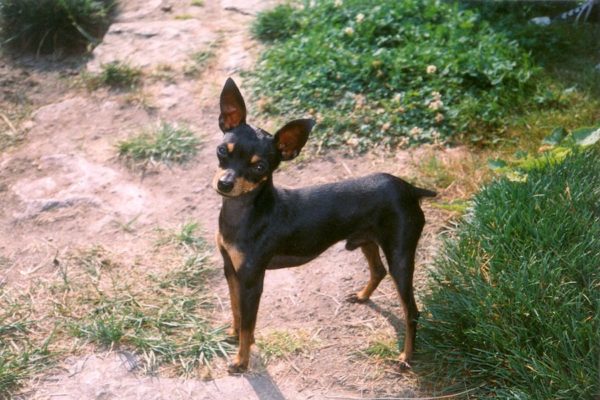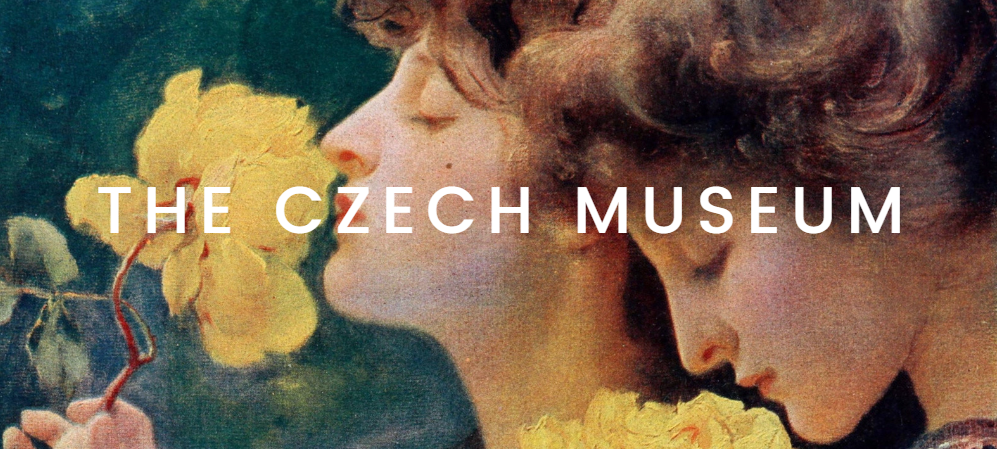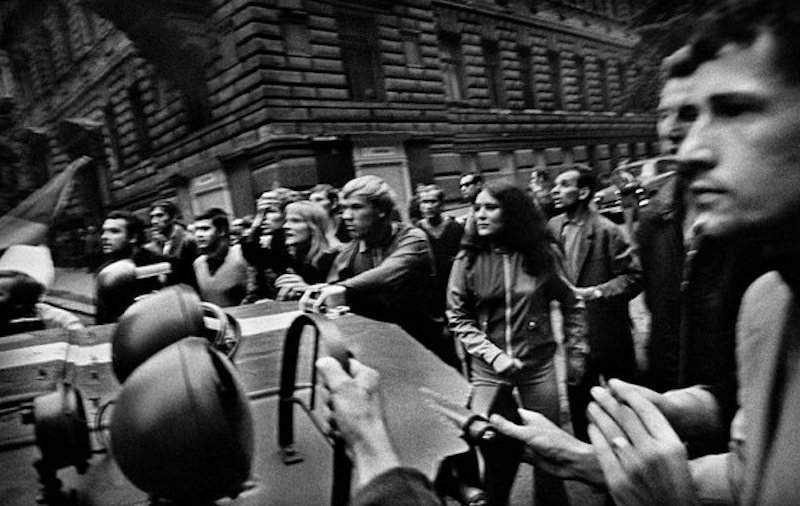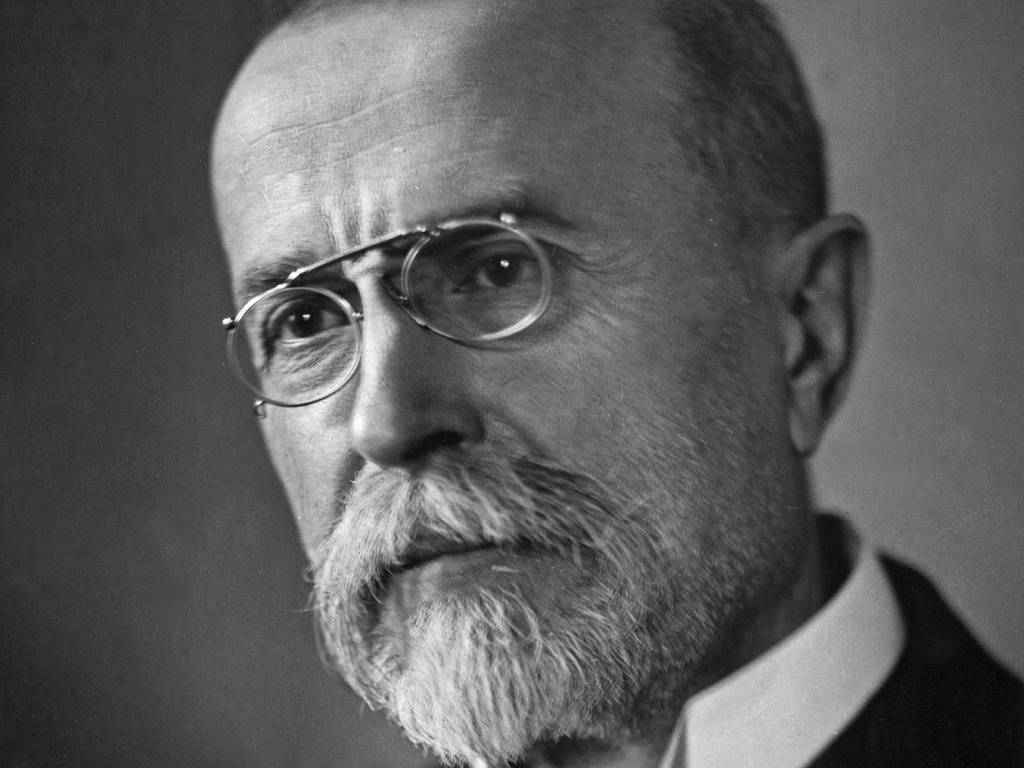Today we’re looking at some vintage old Czech cameras. Why? Because they are such pretty little machines capable of capturing those magical moments that only come once in a lifetime. But I have to confess, it’s also because posting photos is much quicker than spending several hours needed to write a more complex post on more in depth subjects. Of course, I could write about each manufacturer, what kind of cameras they created, how the company was formed, how many years they were in existence, which cameras took which famous photos and on and on…
But frankly, without a patron or sponsor to assist in the overhead of the site, combined with all of the added extra expenses life has thrown at us the last few weeks, I just cannot take the time… so I hope you will make due with today’s post highlighting some little known Czech cameras.
Fex Indo Superior: Circa 1940
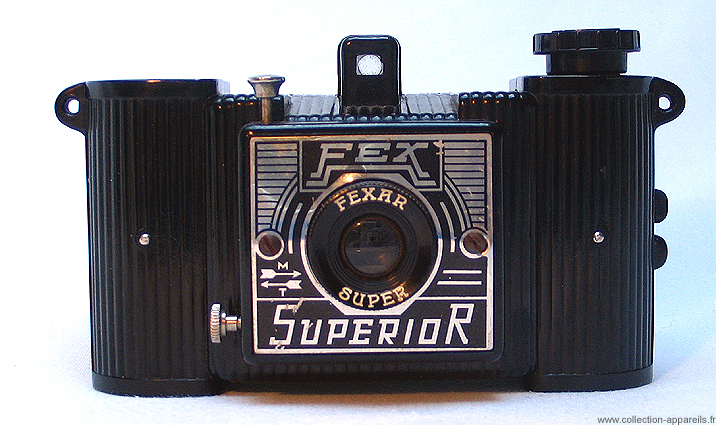

This camera was manufactured in Czechoslovakia. The history of its patent depository, Fritz Kaftanski, is full of uncertainties. Kaftanski was a “Stateless Jew” in the interwar, and was forced to file patents in the country where he lived, often redepositing the same. The patent for this device was introduced in Czechoslovakia in January 28, 1938. A similar patent is then deposited in France (871.395). We may note that the name FEX is already used on this unit and he will then be in France, while it is often said that FEx means France Export. It is doubtful that the first meaning of the Czech model was the same.
Meopta Mikroma II: Circa 1960
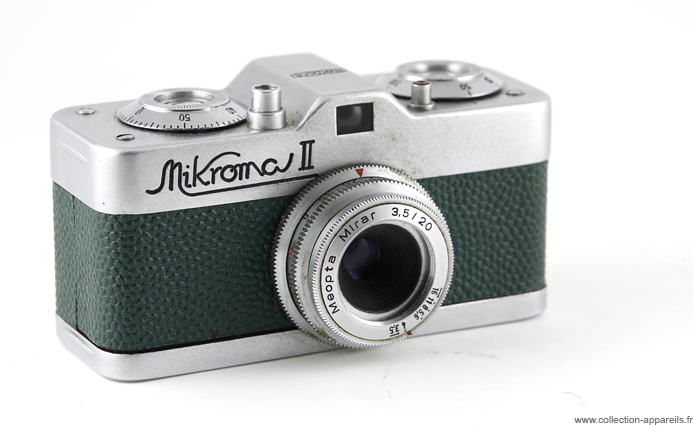

This Mikroma II is similar to Mikroma; Only the shutter speeds have changed from 1/25 to 1/200 to 1/5 to 1/400. This Czech miniature used 16 mm film and produced 50 views in 11 x 15 mm format.
Druopta Rix: Circa 1950
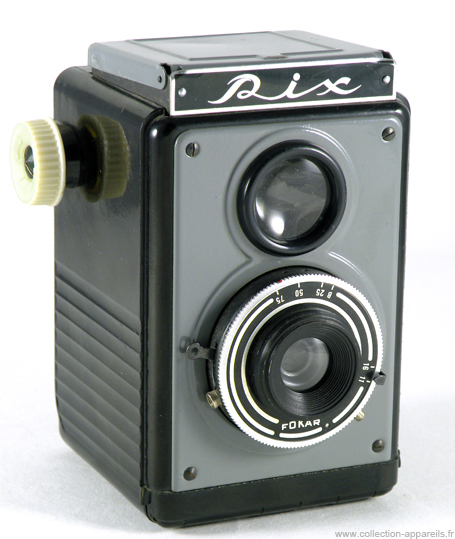

This camera is manufactured mainly from black bakelite. The front face and the viewfinder cover are made of lacquered gray steel. The film advance knob is white plastic. all is very simple and elegant
All the controls are on the shutter, which contributes to the general simplicity.
Druopta Corina 2: Cica 1960
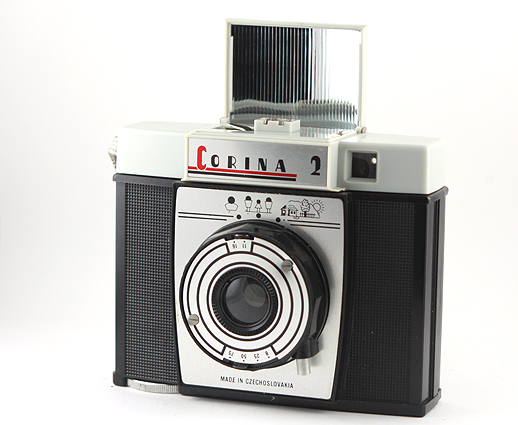

If it did not come from Czechoslovakia, this camera with the not very advantageous physique would have little reason to hold the attention. Manufactured made of bakelite, it is provided with a helicoid slope. The shutter has three speeds. The lens has two apertures.
Lord Lord Super: Circa 1950
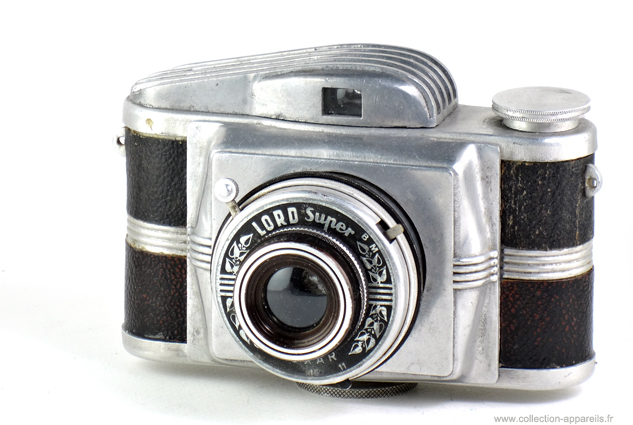

Foxtechna Lord Super-
The Lord Super is the almost double of the Lord Special and undoubtedly they come from the same manufacturing. The technical data are identical, but the weight is very different (100 grams lighter). These cameras are engaging with the traces left by the hands that made them.
Meopta Milona: Circa 1952
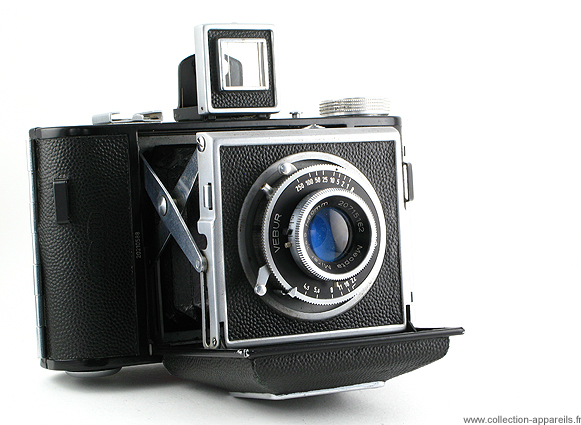

A beautiful horizontal folding 6 X 6 which was extremely well manufactured and had many clever features.
Nominally 6 X 6 format, it is in fact dual format, also allowing 6 x 4.5. Two film counter windows on the back of the camera corresponding to the two formats. The 6 x 4.5 frame is difficult to use for framing, as the lines on the glass are too fine. The lens and the shutter are mounted on a square panel, attached to a small bellows. This panel is held in place by Klapp-type struts. On the top of the panel, there is a small button which can be moved along a sliding scale between two settings: 0 and 1 mm. When the button is moved towards the 0 setting, the lens and the shutter move very slightly downwards, independently of the panel. This is probably for an attachment for close-up photography. The lens is a Meopta Mirar 80mm, 4.5, the shutter a Vebur (copy of the Compur 250?) bearing the logo of Veb Pentacon. The shutter release is on the shutter itself, where there is also a synchro-flash terminal. Of particular note is a cleverly-designed feature, which helped when taking the picture below. Around the tripod socket there is a part which is normally folded flush with the bottom of the camera, but which can be unfolded to form a small support. This ensures that the camera is perfectly horizontal when resting on this support and the open door.
Tovarna Futurit: Circa 1939
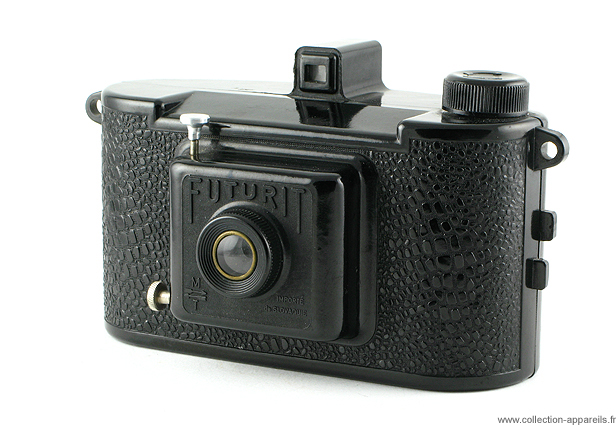

Futurit was the single photographic manufacture of this company of Bratislava (Slovakia), accustomed to the manufacture of cables.
Dufa Pionyr: Circa 1940
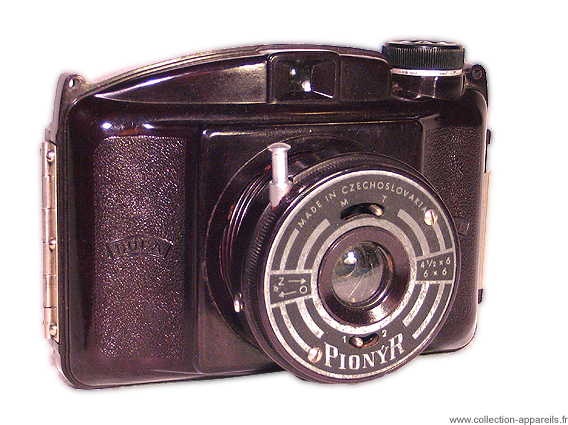

This is the red-brown (very dark) version of the Pionyr. It should be noted that this copy no longer has the decorated backplate behind the lens, but you can guess the DUFA mark molded in relief on the front left and right.
Meopta Stereo Mikroma: Circa 1961
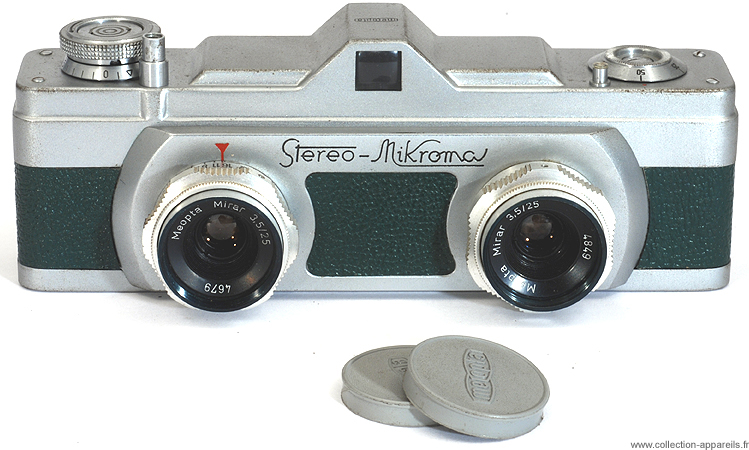

This is the first model of Stereo Mikroma, which uses 16mm film in specific cartridges allowing 22 image couples. The finder is a Galileo finder. The shutter has speeds of 5, 10, 25, 50, 100 and B, with flash synch. It is a fix focus camera. Lens are 1:3.5 25mm (n°4849 and 4679). The leatherette is green. Advancing the film won’t cock the shutter.
Atak Inka: Circa 1947
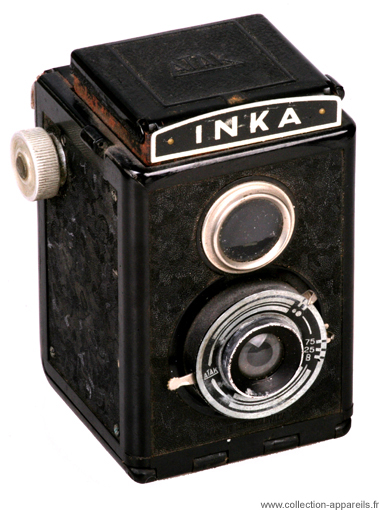

One cannot prevent oneself from establishing the link with Lubitel or Voigtlander, each of these machines, brilliant.
Eta Etareta: Circa 1946
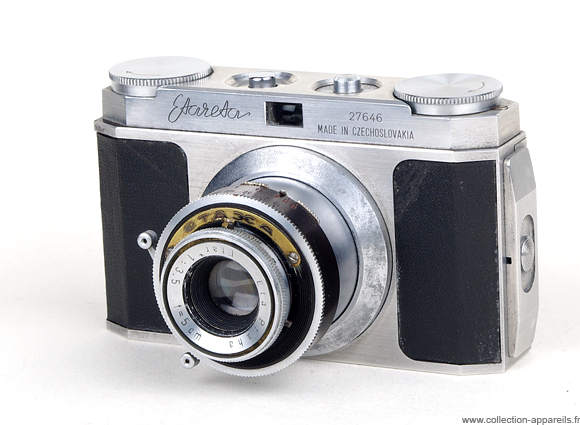

The Bible of collectors, The McKeown ‘s, indicates two versions of this camera. The version issued at the start of production has a logo on the film winding knob , while on the “enhanced” version, the winding and rewind knobs are sheathed . However, it is clear that this device having no logo engraved or sheath inserts belongs to a third category. There are also five versions of the lens: Etar , Etar I Etar II , Etar III and Etar IV . I do not know the reason for this change of reference but as all of these lens have the same maximum aperture of 1:3.5 , it is likely that we face changes in internal components making spare parts incompatible.
Manufacturing experienced a lot of hazards in a post- war Czechoslovakia and full socialist reorganization . After being incorporated into the nationalized company Meopta Prerov , Eta continued manufacturing the Etaretta until planners entrust this manufacturing to Druopta cooperative in Prague. The Czech Cameras for Beginners book indicates the strange resemblance of the Japanese unit Monte 35 launched in 1953 by Shinsei Optical Works. Following an exchange in the forum, it appears that the method of manufacture and the dimensions are different.
Birnbaum Super Perforetta: Circa 1940
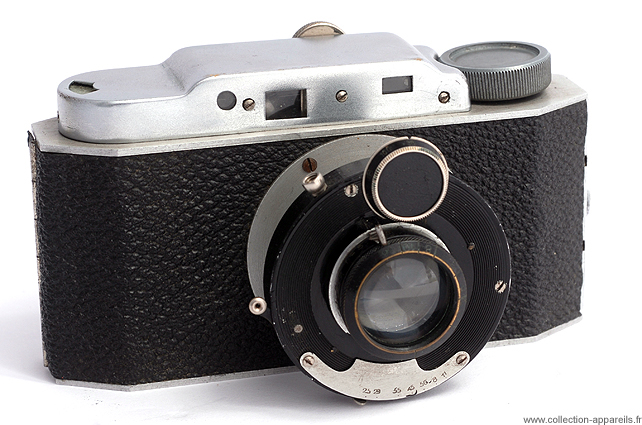

This Czech camera was marketed around 1940. On this 24 x 36, the objective tube must be pulled if it is to operate properly. It uses 35mm film, but with specific cartridges. The transport of the film and the arming of the shutter are not associated. To advance the film once exposed, a small lever must be operated on the back of the camera. It releases the capstan that drives the film (and the view counter). The shutter does not require prior arming and of course no security exists to mitigate the multiple exposures. A coincidence rangefinder is present next to the sight eye. This rangefinder is not coupled; The distance indications must be entered on the lens. This camera has been proposed with multiple lens / shutter combinations; The specimen presented here is equipped with a 50 mm Perfotar lens open at f / 2.5.
Dufa Pionyr: Circa 1940
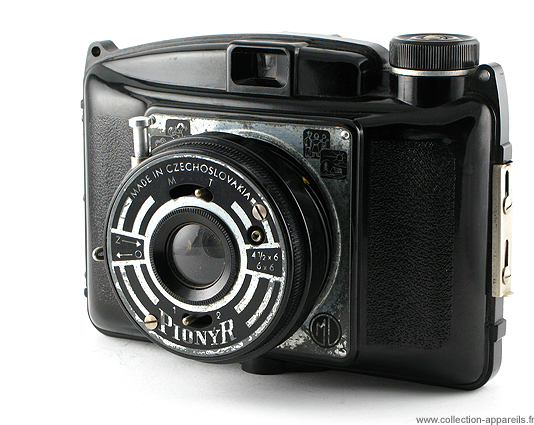

The Pionyr resembles a shortened version of the Photax III or IV. Shape aside, the resemblance is obvious: a sloped bakelite body with the shutter release positioned directly above the shutter/lens block. Based on the markings, however, one can assume the Pionyr’s optics have little in common with a real MIOM lens.
Meopta Flexaret VI Automat: Circa 1964
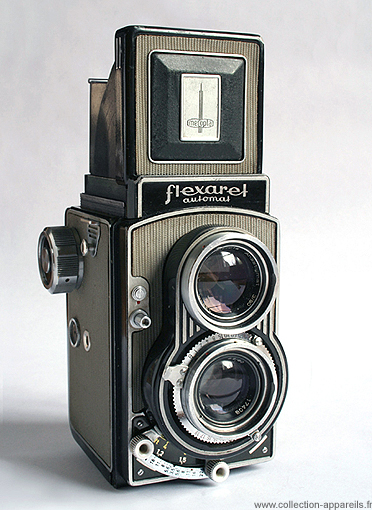

This camera is similar to the Flexaret shown here with the following exceptions: The upper lens is not a f. 3,5 Bellar but a f. 3 Meopta Anastigmata and the shutter is not a Prontor SVS offering the 1/400 sec + B but probably a Metax which offers the 1/500 sec +B. All models of Flexaret are twin-lens reflex cameras with aluminum body, taking square “6×6” format photographs on a 120 roll film. Some models were also capable of working with 35 mm film with the help of a special adapter.
Ultra Fex Himalaya: Circa 1956
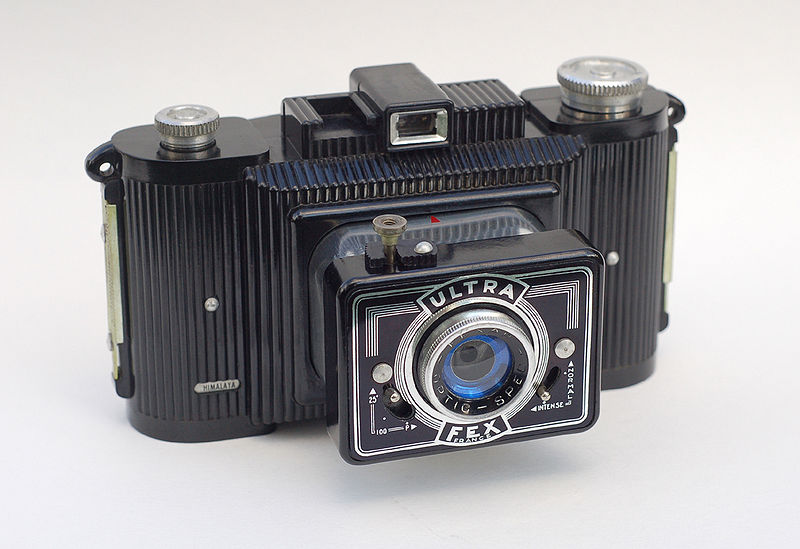

Manufactured by Fex/Indo (France), the Ultra Fex was made in various incarnations from 1946-66. This particular example was made c1956, and has the word “Himalaya” on the tiny plate at the bottom left. Apparently, Fex sponsored a Himalayan expedition in 1951, and began marketing a few Ultra Fex models as such. This is the earlier version of the Ultra-Fex. Later ones had the shutter release on the body.
Sources: Wikipedia, Collection Appereils.
We hope you enjoyed today’s post. If so, please consider making a small donation to support the site. Thank you in advance for your support! :)
If you have not already subscribed to get TresBohemes.com delivered to your inbox, please use the form below now so you never miss another post.
Remember, we rely solely on your donations to keep the project going.
Become a friend and get our lovely Czech postcard pack.



